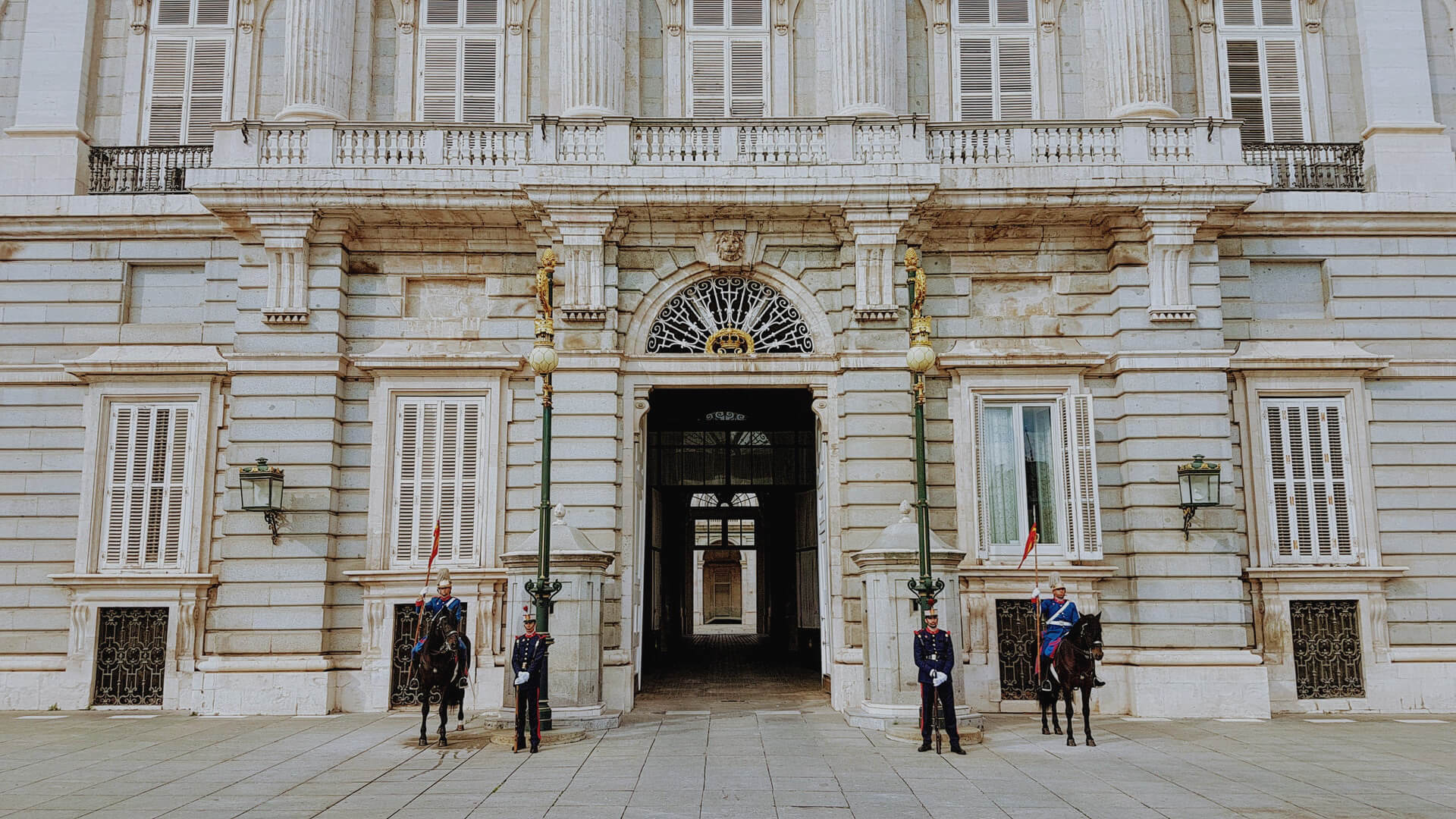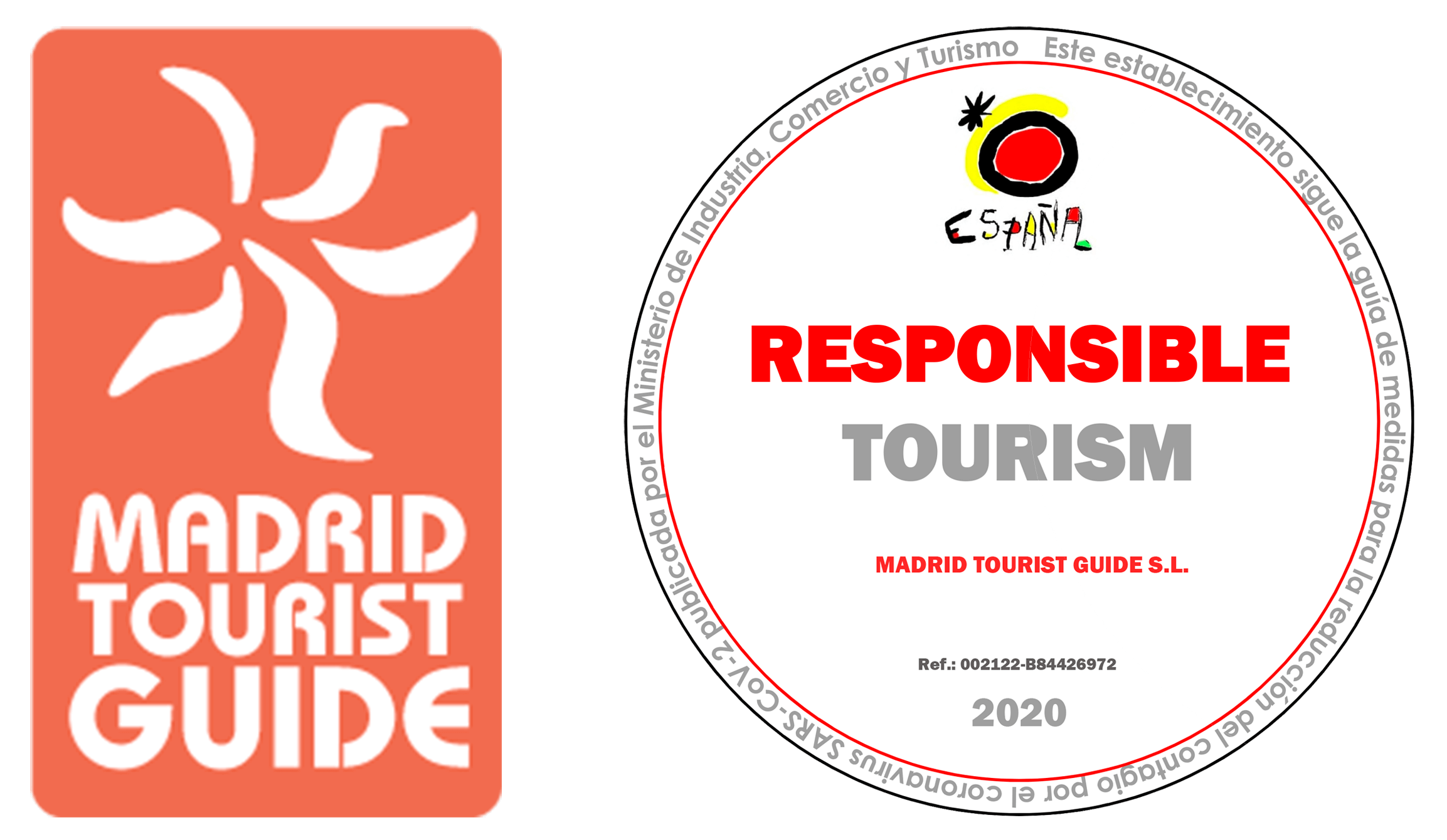
Charming Tours
-
Basic Routes
-
Specific Routes
-
Museums
-
Current exhibitions in museum or art galleries
-
Visits in the community of madrid (region)
-
Visits outside the community of madrid (others regions)

Medieval Madrid
The history of the origins of Madrid, the city of the three cultures: Christians, Muslims and Jews and the archaeological remains of the walls.

Madrid of Habsburg Dynasty
The town and court of Madrid from the sixteenth century became the capital of Spain, King Philip II began to live with his court in the city, in the Alcázar, the first works began in<br /> the central district of Madrid, the city of the Habsburgs and the Plaza Mayor (Main Square), as a place for markets, festivals and executions, the Plaza de la Villa, and its narrow streets, churches and convents.

Legends of Madrid
Visit about the oral traditions, stories that historical and fantastic characters of Madrid, street names, the Madrid of the imagination and the popular tradition.

Legendary establishments and shops in Madrid
Tour to learn about the history of these centenary establishments that still continue with the tradition of Madrid's gastronomic specialties, patisseries, restaurants, taverns, shops with traditional costumes such as bullfighters, Spanish capes, liturgical objects ...

Madrid of Bourbon Kings (XVIII-XXI centuries)
Starting in the 18th century, Madrid became the city of the Enlightenment, welcoming foreigners representing embassies from other countries, the rise of Fine Arts, changes in fashion, now of French influence, and our Best Mayor of Madrid, the King Charles III.

Madrid of the XXth century
Modern Madrid, the one that grew from the 19th century, the first expansion of Madrid, the Salamanca district, Colón Square, Castellana and Castilla Square, with new buildings that enrich the city's heritage in the last years.

Madrid Rio Project
Wonderful project and new canalization of the Manzanares river, with walks, gardens, recreation areas, renovation project with its old and newly built bridges, history and evolution.

Retiro Park
Madrid's emblematic park, former royal heritage, a site reserved for the King and his family, which, from 1931, became a public park, its history, fountains, reserved area, palaces and the famous pond where King Philippe IV used to see its theatrical and nautical shows.

Sabatini and Royal Gardens
Gardens of the Royal Palace, today of public access, with fountains, sculptures and a long history, former headquarters of the Carriage Museum of the Royal House.

Paseo del Prado ``The light passage``
The Paseo del Prado becomes from the time of Carlos III, in the place showcase of Madrid society, to see and be seen, we will walk along the promenade, today in the spotlight, for being a favorite place to be declared World Heritage by UNESCO. Meeting point: Facade of the Palacio de Cibeles, center-center, current City Hall of Madrid, in the Plaza de Cibeles.

Madrid of Charles III (XVIII century)
Tour of the places of expansion of the city in the time of Charles III, in the 18th century, the Paseo del Prado, place of intellectuality at that time, Prado Museum, Fountains and Alcalá Gate.

Crimes in Madrid
Criminal acts that became very famous, by the chronicles of each time, the newspapers: murderers, thieves, crimes of passion.

Madrid of the Queen Elisabeth II of Spain (Romantic Madrid)
The Romantic Madrid of the 19th century, the Opera, the fashions, the romantic writers, who left their descriptions of the city at that time, the Bohemian and romantic life.

Literary Madrid
We will visit the Literature neighbourhood that reminds us of figures such as Cervantes, Lope de Vega, Calderón de la Barca, Quevedo, the great writers of the Spanish Golden Age, the life of the theatres, the picaresque of the people of Madrid in theatrical circles, the actors and the theatre representatives.

Films in Madrid
We will visit places in the centre of Madrid, which have been the setting for films by filmmakers like Almodóvar, among others, we will remember famous films and actors from Spanish cinematography.

Famous women in Madrid History
Visit to the center of Madrid, remembering the women who have made history from the 15th to the 20th centuries: Beatriz Galindo, Isabella the Catholic Queen, actresses like María la Calderona, writers like Emilia Pardo Bazán, queens like Margarita de Austrias, or Isabella II , and also the Princess of Éboli, Mariana de Jesús, Duchess of Alba, Countess Duchess of Benavente… Concepción Arenal, Clara Campoamor.

Easter in Madrid
Tour to know the tradition of Easter in Madrid, processions, churches, brotherhoods, iconographies, typical gastronomy at this time.

Christmas in Madrid
Christmas festivities in Madrid, origins, traditions and customs.

West Park
Madrid Park with its history, near the University City and Moncloa, remains of the Civil War, fountains that remind historical figures related to the history of Latin America, the Rose Garden, the Egyptian Temple of Debod and views over the Royal Palace of Madrid.

Prado Museum
The Prado Museum is the most important museum in Spain, you can visit in Madrid, here you will find the masterpieces of great painters such as Velázquez, El Greco, Goya, Murillo, Zurbarán, El Bosco, Rubens, and a selection of works by Italian, French, Dutch painters, from the baroque period to the Neoclassicism and Romanticism, do not miss the opportunity to really see the most important paintings in the history of art and above all the possibility that an expert art guide can explain to you the curiosities of them.

Thyssen Bornemisza Museum
The Thyssen Bornemisza Museum is located in a former palace on the Paseo of Prado, near the most important museums in Madrid. The collection shows the evolution of the history of art (painting and sculpture) from the fourteenth century to the present day, with proposals for temporary exhibitions related to artists of the latest generation, from baroque, neoclassical, hyperrealism and new avant-garde, with special attention to the American school since the eighteenth century. Do not miss the opportunity to the explanations of a guide who will propose the selection of the most important pieces and give an overview of the collection.

Reina Sofia Museum (contemporary art museum)
The Museo Nacional Centro de Arte Reina Sofia is the museum that houses the collection of Spanish contemporary art and other schools, in addition to holding temporary exhibitions of emerging art. Don't miss the opportunity to see the famous Guernica painting by Pablo Ruiz Picasso, or the works of Salvador Dalí and Joan Miró, among others. The history of contemporary Spanish painting from the end of the 19th century to the 21st century.

Royal Palace and Royal Armoury

Sorolla Museum

Archaeological Museum

Romanticism Museum

America Museum
The Museo de América de Madrid is an institution dedicated to the preservation, research and dissemination of the heritage of the American continent and the peoples who have historically inhabited it. The collections are extensive and diverse: pre-Hispanic archaeological objects, works of art from the viceregal period and a large ethnographic sample of American cultures of the nineteenth and twentieth centuries.<br /> The oldest collections of the Museum of America come from the Royal Cabinet of Natural History of Charles III (1771), whose origin dates back to the donation of part of the cabinet of the Ecuadorian Pedro Franco Dávila. Pieces from the first archaeological excavations carried out in America as well as ethnographic objects collected during scientific expeditions were incorporated into the cabinet.<br /> Don't miss the Paracas Mummy, Peruvian textiles, the history of the Guanches, American society through the ages and the famous Tudela and Trocortesian codex.

Costume Museum
Throughout the year, there are many temporary exhibitions of various themes, which can be visited, some need prior reservation, so it is important to confirm the visit with some time in order to carry out the procedures.

Alcalá de Henares
Birthplace of Cervantes, University, Co-cathedral, Complutum (roman city), Archaeological Museum…

Royal Monastery of the Escorial
Visit to the Royal Monastery of El Escorial, an Unesco Heritage monument in front of Mont de Abantos in the Sierra of Madrid, a place built by King Felipe II for his rest days, and respect for his predecessors, such as Emperor Carlos I, his father and the protection of his family, a symbolic place of the monarchy, is made up of the Palace, the Monastery, the College, the Library, and the Basilica, as well as the gardens that surround the complex. All this decorated by the best artists of the 16th and 17th centuries, following the philosophy of the Counter-Reformation: Velázquez, El Greco, Zurbarán, Tiziano, Lucas Giordano ...

Aranjuez
Royal Palace and the Gardens.
Castilla la Mancha

Toledo
The Medieval City, Cathedral, Museums, Synagogues.

Guadalajara

Sigüenza

Ruta de la Princesa de Éboli: Pastrana
Castilla León

Valladolid

Segovia

La Granja and Riofrío Palaces in Segovia

Santa Teresa of Avila Route

Salamanca: university and cathedrals

Soria

